
Roswell, GA 30076 DBA Residential Building Assessments, Inc.





Thermal Imaging (Thermography)
Human beings are limited to seeing light only in the visible spectrum. Infrared cameras allow our inspectors to see beyond the spectrum of natural light. Infrared cameras (thermal imager) measure temperature variances on building surfaces to determine where heat, cold, moisture and even mold may be occurring.
The unique aspect of seeing surface temperature variances is that such variances can be caused by issues that lie below the surface of a floor, behind a wall or above a ceiling - places that are traditionally considered “inaccessible” for an inspection. By utilizing infrared thermography we increase the accuracy rate of correctly identifying problems and reduce the collateral damage required to fix such problems. We have the ability to spot and catch small problems sooner so they don't become expensive or unmanageable problems that might affect your family's health or become a financial burden.
Temperature differences on building materials are represented by different color tones. Any colors within the orange and yellow hues represent warmth, while colors in the purple and blue hues represent cooler temperatures.
The images below are just few examples of our inspection findings that could not have been discovered without the proper infrared equipment.
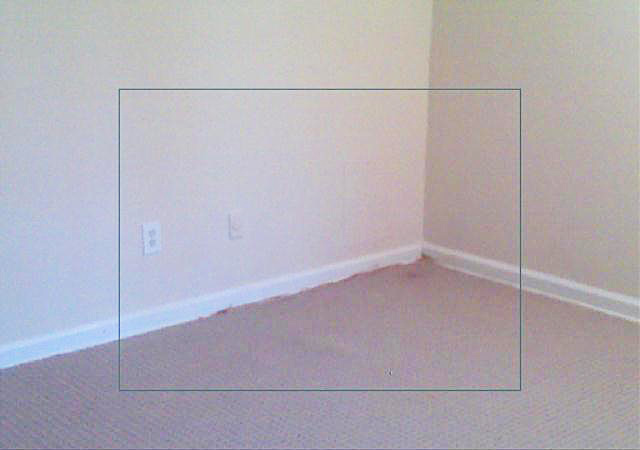
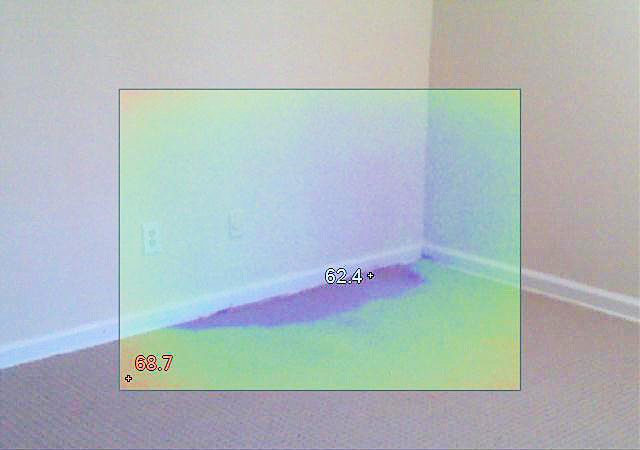
Visual image (left) indicates crumbled carpet along the baseboard in a basement. The issue would have been considered a "cosmetic defect" by a conventional home inspector. Viewing the area through an infrared lens revealed pooling water underneath the carpet (blue region on the Infrared image on the right). Further evaluation led to discovery of a clogged foundation drain.
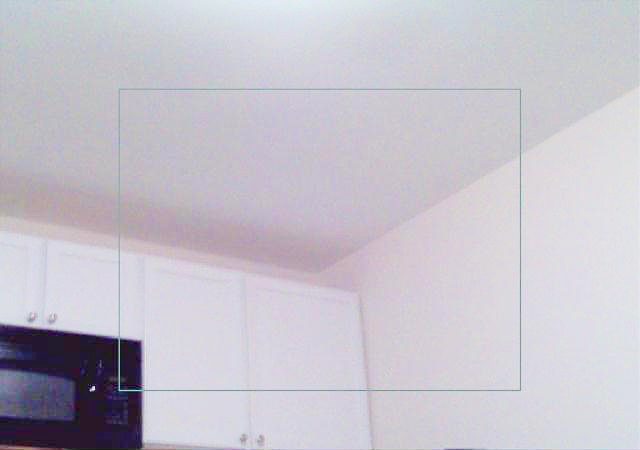
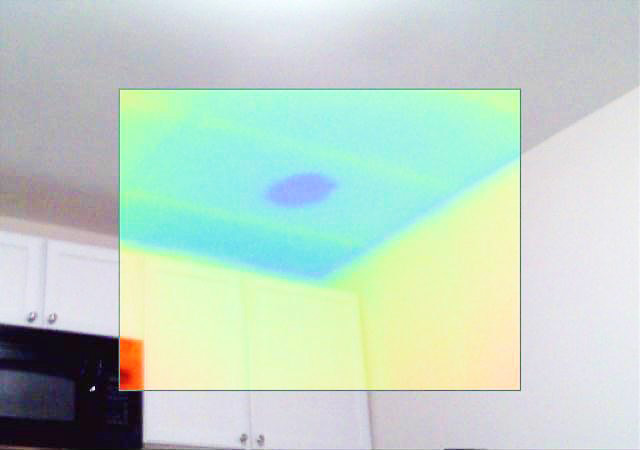
Visual image (left) shows intact sheetrock on the kitchen ceiling. Looking at the area through an infrared lens revealed active water leak in the master shower stall above (round blue region on the Infrared image on the right).
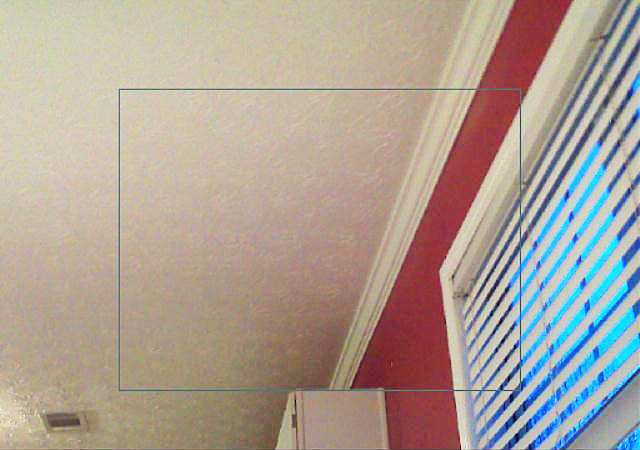
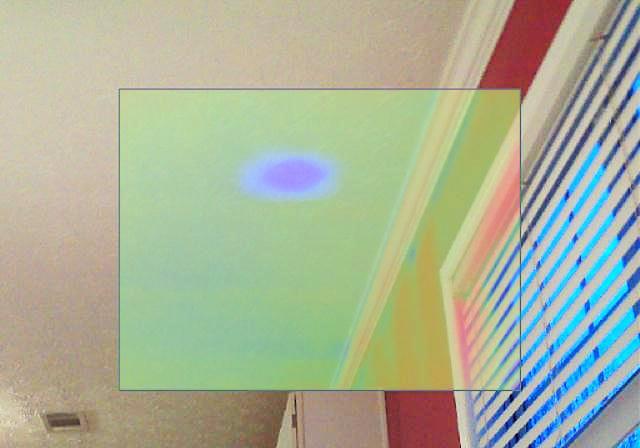
Visual image (left) shows undisturbed sheetrock on the family room’s ceiling. Our infrared scan revealed an active water leak in the guest bathroom above (round blue region on the Infrared image on the right).
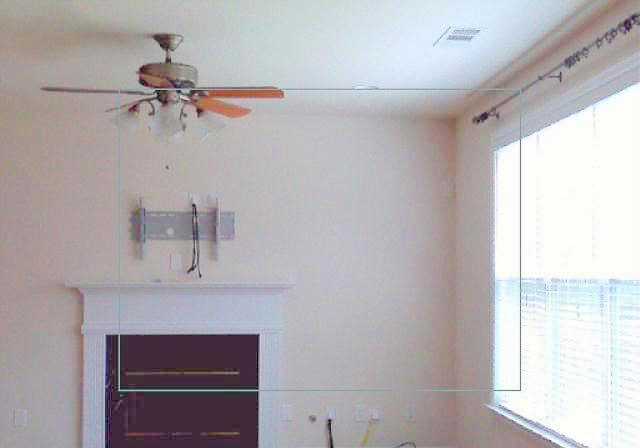
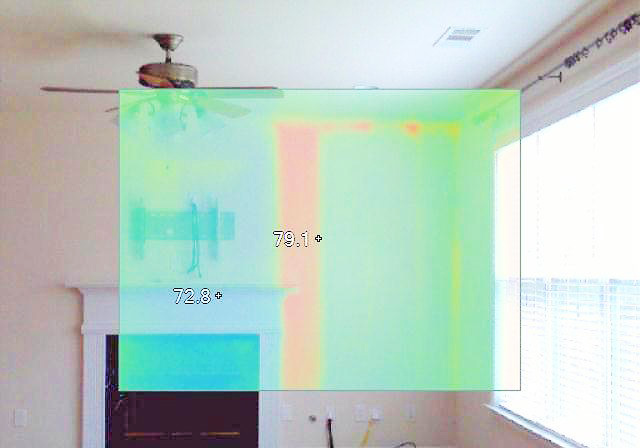
Visual image (left) shows no signs of concern on the family room's wall. Our infrared scan actually revealed missing insulation between wall studs beside the fireplace (rectangular orange region on the Infrared image on the right).
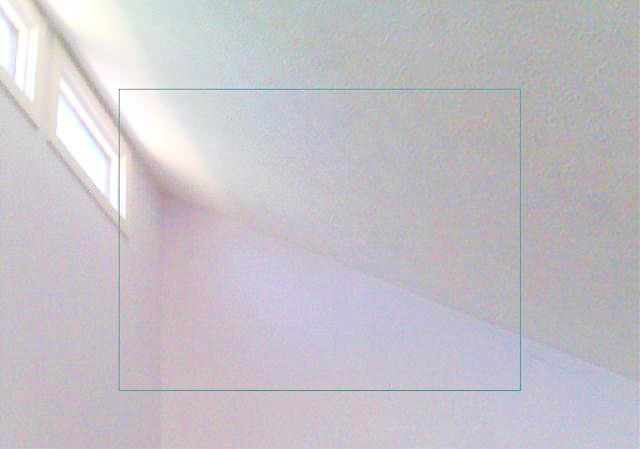
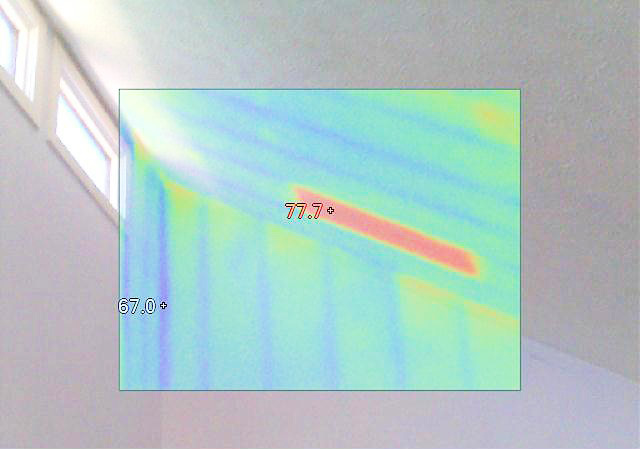
Visual image (left) shows no signs of concern on the family room's vaulted ceiling. Looking at the area through an infrared lens revealed missing insulation between roof rafters (rectangular orange region on the Infrared image on the right).
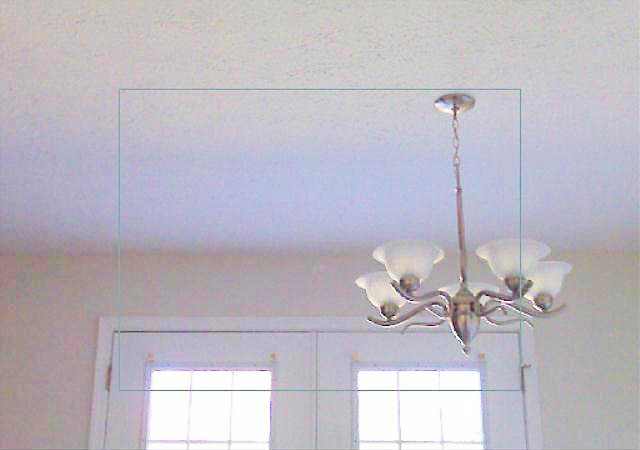
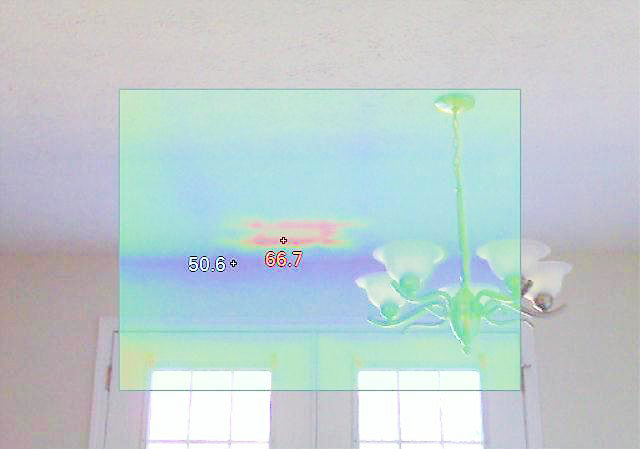
Visual image (left) shows no signs of concern on the breakfast area's ceiling. Our infrared scan revealed an HVAC vent covered with drywall (rectangular orange region on the Infrared image on the right). Vents are routinely covered up by sheetrock installation crews. Believe it or not, we have uncovered this typical construction blunder numerous times in the past, and are likely to see it again in the future.

